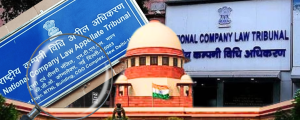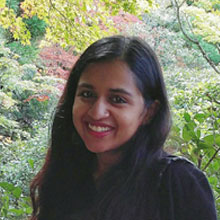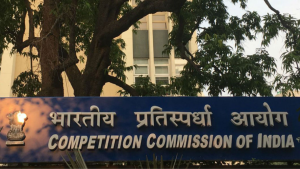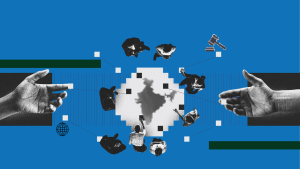

Towards a Report on the State of the Judiciary in India – Part II
In the initial stages of our work, we decided to work towards a comprehensive report on the state of the judiciary in India. For this we invited a range of lawyers, academics and experts in public policy for a consultation. This consultation took place in the DAKSH office on 11 July, 2015, between 10:00 a.m. and 3:30 p.m. This is the second of a two part blog post, containing a detailed summary of discussions of the consultation.
Prior to the consultation the participants were given a blueprint of the State of the Judiciary Report as envisaged by DAKSH. The report was divided into three sections: the first dealing with judicial administration and working, the second focusing on DAKSH’s data and how it would help us better understand the judiciary, and the third concentrating on access to justice in India. We asked the participants a set of questions that were grouped to correspond to these three chapters. In this post you will find a recap of the discussions revolving around the second and third set of questions.
Discussion:
2. Comparative Perspectives on Courts
a) Why are some courts more efficient than others?
b) Why is the frequency of hearings for some types of cases higher than for others?
c) Why is there a great frequency of adjournments?
d) Why are judges (and lawyers) so accommodating towards repeated requests for adjournments?
Arun Sri Kumar remarked that we need to be clear that the question ‘some courts more efficient than others?’. He felt that efficiency of courts is based on their jurisdiction, geographical location, the local laws, and the populations they serve.
As the concept of judicial efficiency is nebulous, a number of participants felt that it could be better understood by comparing High Courts with other judicial institutions. The basic idea proposed was to compare statistics on average pendency and disposals rates, which are key indicators of efficiency. Ramapriya Gopalakrishnan suggested we choose specific courts such as fast-track courts or company tribunals while Alok Prasanna recommended we consider National Lok Adalats. Prof. V. Vijaykumar felt it would be worth looking into available statistics on alternate dispute resolution methods and out-of-court settlements, as these are also indicative of the confidence of the citizen in the courts. Alok Prasanna also shared his idea for a budget-based analysis of judicial efficiency which would examine whether there is an alignment between the budget of each court and the number of cases filed before it and disposed by it.
R. Sri Kumar emphasised that the efficiency of the judicial system is greatly hampered by corruption. He spoke of discrimination between the rich and for the poor when justice is involved, and how economic has often speeded up the judicial process. He felt that it was crucial for judicial discretion to be eliminated for some kinds of cases, such as criminal, where everyone’s need is the same. He suggested that some parameters, for what could constitute an ‘emergency case’ and would get precedence, be drawn up.
Ashwin Mahesh picked from where R. Sri Kumar left off on the removal of discretion. He stressed that the ‘VIP’-ing of the system has to be eradicated and the principle of ‘first in, first out’ must be followed. If there are many cases of a certain type then they should all be decided in the order in which they are filed, without any jumping of the queue, like the recent Salman Khan and Jayalalithaa cases did.
There was also some discussion on the contribution of lawyers towards efficiency. Alok Prasanna theorised that a look at lawyers’ names in the database would show that a very small pool of lawyers is actually doing a majority of the work. This could result in them being pressed for time, which may be why they constantly seek adjournments.
Deepika Murali also spoke on the point of lawyers bringing efficiency to the system. She suggested costs be imposed on lawyers who ask for multiple adjournments. On the point of multiple adjournments Prof. V. Vijaykumar explained about the system in place in some lower courts, where if more than three adjournments are sought in a case, that case gets highlighted and ‘locked’, and can only be reopened by a supervising High Court judge. He thought it was a good method to implement in the High Courts as well.
There were several analyses suggested in order to review causes for pendency. Deepika Murali said that we should consider cases which are classified as interim orders or in which the main prayer is an interim order. R. Sri Kumar proposed that we identify and analyse cases where judgment is reserved, but not passed, so as to review judicial delay. A possible analysis recommended by Prof. V. Vijaykumar was to examine if the same parties are filing multiple cases against each other by reviewing whether petitioner and respondent names match in different cases.
3. Access to Justice
a) What are the expectations of citizens from the judicial system?
b) What is a fair amount of time and efficiency that a litigant can expect from the legal system in terms of dispute resolution?
c) What are the barriers to accessing the justice system?
d) How can we access information on the demographic and socio-economic profiles of litigants?
As a key part of the section on access to justice, a survey of litigants is proposed to be conducted. Our intent is to gather reliable quantitative information from litigants in the Indian judicial system on their profiles, demand and ease of access, and use of the judicial system. We want to understand the geographical, infrastructure- and process-related challenges that litigants face. While collating data, we hope to answer questions about whether citizens are able to use the judicial system to effectively resolve their problems or disputes and what factors affect their use.
The main take back from the discussion surrounding the above-mentioned set of questions was whether to extend the access to justice survey to both litigants and citizens or keep it focused on litigants. Several attendees suggested that the survey include citizens who are not currently litigating. Arun Sri Kumar suggested a citizen satisfaction survey, and comparing potential litigants’ expectations with current litigants’ expectations.
The final set of questions concluded with lunch and followed with a short open floor session where general questions were answered. Post lunch, the consultation drew to a close with a quick thanks to DAKSH from R. Sri Kumar, on behalf of all the participants for the interesting and insightful discussion.
With this we come to the end of the two part blog post detailing the discussion at our consultation. We look forward to hearing your comments and feedback.
The views expressed in this article are solely those of the author’s and they do not represent the views of DAKSH.

Ramya Tirumalai
RECENT ARTICLES


Testing the Waters: Pre-Implementation Evaluation of the 2024 CCI Combination Regulations

Not Quite Rocket Science

Administration of justice needs an Aspirational Gatishakti

-
Rule of Law ProjectRule of Law Project
-
Access to Justice SurveyAccess to Justice Survey
-
BlogBlog
-
Contact UsContact Us
-
Statistics and ReportsStatistics and Reports
© 2021 DAKSH India. All rights reserved
Powered by Oy Media Solutions
Designed by GGWP Design